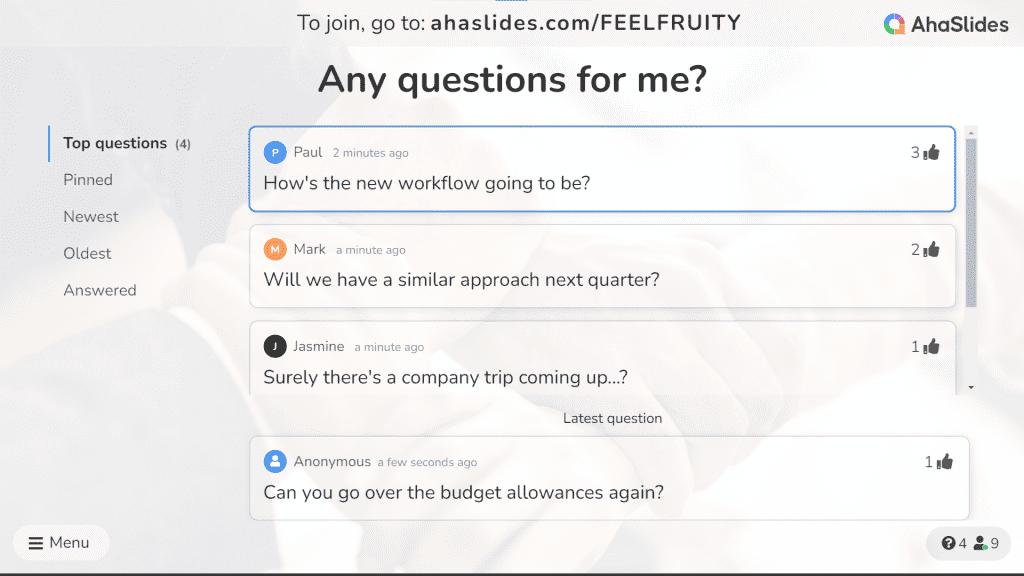Cultural of Engagement has been a significant factor in attracting and retaining talents in the next decades. No firm can ignore the importance of creating an engagement culture from the bottom to the top.
Every employee, from entry-level positions to the management level, is an irreplaceable part of sustaining this culture. So, what are the best strategies for building a culture of employee engagement? Boost cultural of engagement with these 10 effective ideas.!

Table of Contents:
- What are the Benefits of Cultural of Engagement?
- 10 Ways to Promote a Cultural of Engagement
- Key Takeaways
- FAQs

What are the Benefits of Cultural of Engagement?
Investing in employee engagement culture isn't just a feel-good initiative; it's a strategic investment in your organization's future success. If you are still wondering why employee engagement culture is crucial for the organization, here are some benefits with highlighted statistics.
Engaged Employees are the Secret Sauce to Success
- Companies with highly engaged employees outperform their peers by 20% in key metrics like profitability and revenue. (Gallup)
- Engaged employees are 17% more productive and have 21% higher profitability. (CIPD)
- Highly engaged teams experience 50% lower staff turnover. (Gallup)
In the dynamic and competitive landscape of the coming decades, engaged employees are the core of company advantages. They are more likely to be invested in their work, leading to increased productivity. When individuals feel connected to their roles and believe their contributions matter, they are motivated to go above and beyond.
Happy Employees Mean Happy Customers
- Engaged employees drive a 12% increase in customer satisfaction scores. (Aberdeen Group)
- Highly engaged employees deliver 10% higher customer satisfaction. (Gallup)
Someone used to ask: "What is more important, employee happiness or customer happiness?". The truth is only happy employees can shape positive customer experiences. When employees feel valued, supported, and motivated, they naturally deliver better customer service. Their enthusiasm and commitment translate into positive interactions, leaving a lasting impact on customers.
Engagement Translates to Innovation and Agility
- Companies with engaged employees are twice as likely to be innovation leaders. (Hay Group)
- Engagement is correlated with a 22% increase in organizational agility. (Aon Hewitt)
Cultural of engagement fosters a proactive approach to problem-solving, enhancing the overall customer experience. The reason behind this is engaged employees are more likely to contribute innovative ideas and solutions. In a cultural of engagement, they are encouraged to take risks and think big. When individuals are passionate about their roles and feel encouraged to contribute their thoughts, it leads to a continuous flow of innovative ideas.
The Financial Impact is Undeniable
- Disengaged employees cost U.S. companies approximately $550 billion annually. (Gallup)
- A 10% increase in employee engagement can lead to a 3% increase in net income. (Hay Group)
If you know about the term "quiet quitting", you might understand how disengaged employees are related to firm finance. Quiet quitters are often physically present but mentally disengaged. They go through the motions without investing full effort, impacting overall team performance and quality of work. In addition, cultural of engagement contributes to reducing turnover impacts. High turnover is costly, every year, companies spend significant resources on recruitment, training, and onboarding new employees.
10 Ways to Promote a Cultural of Engagement
Creating and maintaining a strong culture of engagement might take companies a huge effort with a continuous journey. Here are the 10 best actionable strategies you can take:

1/ Build Psychological Safety
An element of a strong cultural of engagement is a psychologically safe working environment. It is where employees feel comfortable taking risks, sharing ideas, and speaking up without fear of negative consequences. When employees feel safe to share unconventional ideas, it fosters a culture of innovation and creativity. This allows your company to stay ahead of the curve and adapt to changing market conditions.
2/ Foster Open Communication
Transparency and openness are the keys to employee engagement. Try to foster open communication within the workplace, where relevant information is shared with employees, even when it's not all positive news. It is also needed to explain the rationale behind decisions and the impact they may have on different teams or individuals. It can be done perfectly by creating safe spaces for open dialogue, such as anonymous suggestion boxes or town hall meetings.
3/ Promote One-to-one Conversation
Another actionable step in building a cultural of engagement is promoting one-to-one chat - which means employees and their managers or team leaders can directly and personally communicate in a deeper and focused conversation. This approach goes beyond traditional hierarchies and encourages open, informal dialogue, which includes personalized feedback, coaching, and guidance.

4/ Facilitate Recognition and Appreciation
In the key employee motivators, recognition and appreciation are always at the top list. It is understandable because everyone wants to be acknowledged for their efforts and contributions. Implementing a robust employee recognition program is a powerful strategy to enhance engagement and create a positive workplace culture.
5/ Organize Fun Team-building Activities
If you want your employees to feel more sense of belongingness and inclusion, the easiest way is organizing team-building activities. They can be a weekly quick icebreaker, monthly gatherings, retreats and outings, year-end parties, daily office workouts, and more. Don't just limit them to physical activities, virtual events with company trivia, and pub quizzes, also are wonderful ideas, especially for remote teams.

6/ Conduct Regular Check-Ins
Regular check-ins help identify potential problems, concerns, or roadblocks early on. It is the best demonstration of how you care about employees' well-being, which leads to a more engaged and motivated workforce. Furthermore, they offer an opportunity to identify areas where employees may need support, whether it's additional training, resources, or adjustments to workload.
7/ Invest in Training and Professional Development
Individuals nowadays seek companies that have a great investment in employee training with career growth opportunities. They want to work for companies that put their people first, demonstrated through investment in their development and well-being, mentorship opportunities, and clear pathways for career advancement.
8/ Increase Autonomy and Flexibility
A strong engagement culture also can be observed through the level of autonomy and flexibility. When employees have autonomy over their work, they feel trusted and valued, leading to increased motivation and a stronger sense of ownership over their tasks. Besides, flexibility in terms of scheduling and location allows employees to harmonize their work with personal commitments, reducing stress and burnout, and ultimately leading to greater life satisfaction and engagement.
9/ Encourage Mental Health Awareness
When evaluating a great cultural of engagement, many see how firms facilitate mental health awareness or stress management programs. The reason behind this increasing concern is today's employees particularly younger generations, prioritize well-being and work-life balance. It is no longer about the traditional "work first, live later", the new generation prefers "life too short, make it count". They feel their work contributes to something bigger than themselves. And companies, that want to attract more talent also need to evolve their management and strategy to adapt to these dramatic societal changes.
10/ Employ Constructive Feedback
Feedback is crucial for personal growth and overall performance. How to collect engaging surveys and give constructive feedback in the workplace? It is better to collect feedback with a high level of anonymity, where everyone can express their opinions freely. It can be done through AhaSlides, this interactive survey tool offers quick and engaging survey templates, where employees feel motivated to complete the survey most genuinely. At the same time, the senders also can access the results and send back their responses and feedback to the participants in real time.

Key Takeaways
💡If you are looking for the best tools for organizing virtual business events such as icebreakers, trivia quizzes, live polls, feedback, brainstorming, Q&A sessions, and more, check out AhaSlides right away! Don't miss the best time of the year to get the best deal ever for improving employee engagement and company culture!
FAQs
How do you measure culture and engagement?
To measure your company culture, there are several effective methods that are recommended by many experts, such as conducting employee surveys, leveraging performance management tools, doing exit interviews, and involving Q&A sessions and town hall meetings.
What is an example of cultural engagement?
The meaning of cultural engagement is everyone has an equal chance to speak up for what is right. They can be done through regular team meetings, one-to-one conversations, and frequent feedback surveys.
Ref: BetterUp | Quantumworkplace







